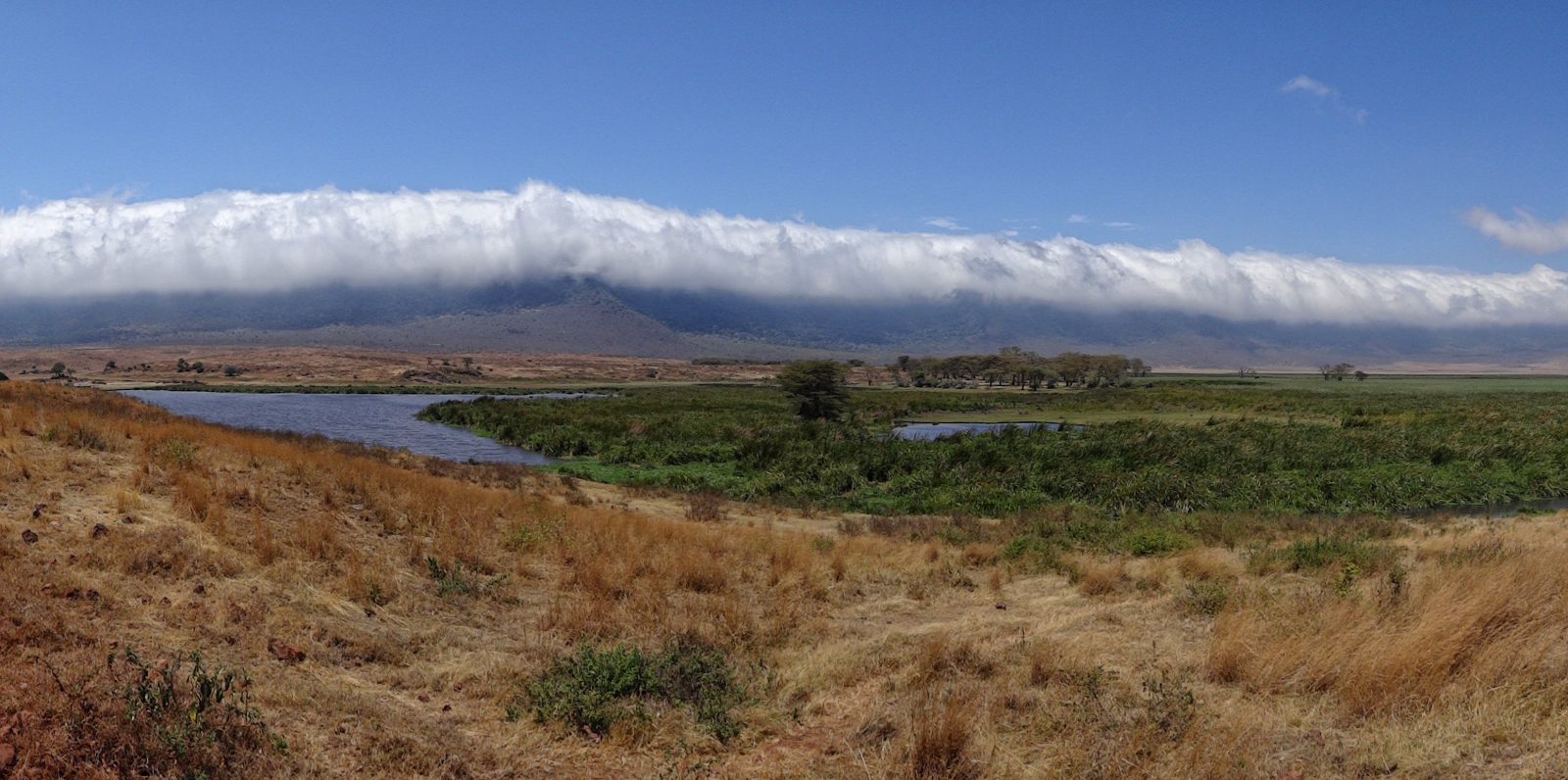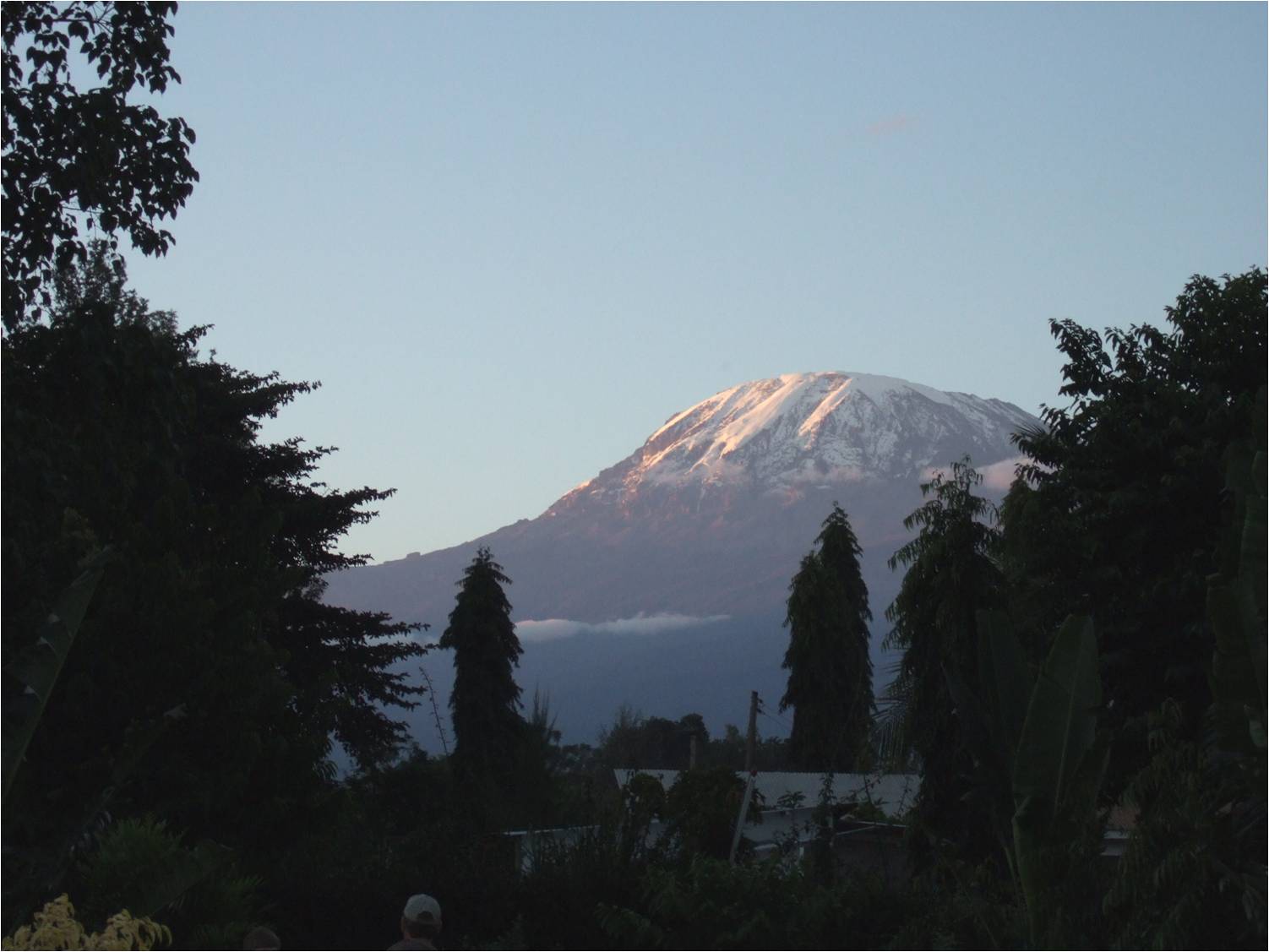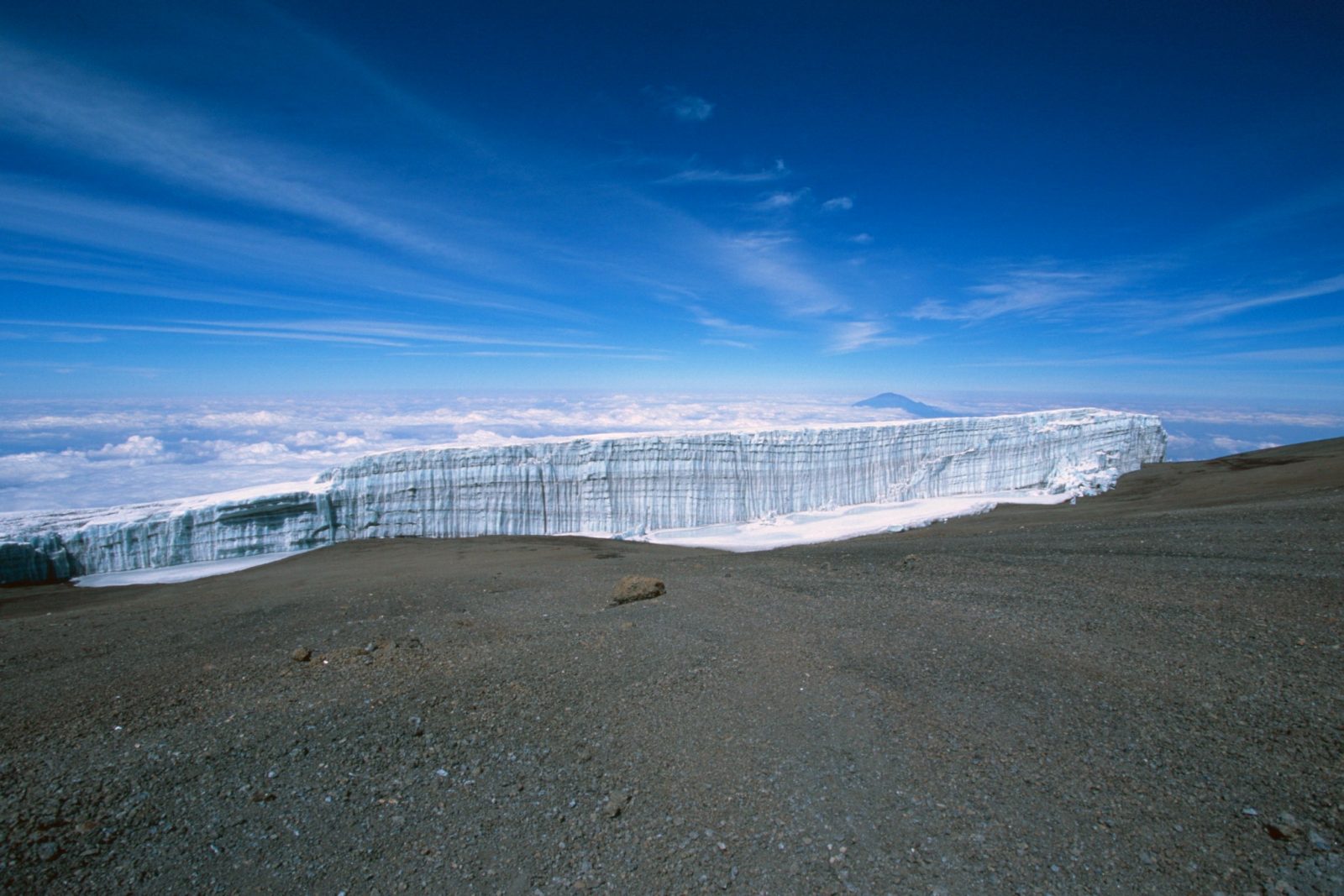
Ngorongoro Crater Safari
The Ngorongoro crater safari is our most popular Tanzanian safari and a big favourite for those people coming off Kilimanjaro who would like some rest and relaxation and wildlife before returning home.
We visit three of the most famous National Parks in the southern Serengeti – Ngorongoro Crater, Lake Manyara and Tarangire – and we offer either camping accommodation, rooms at a local hotel in the town of Mto wa Mbu or a luxury safari lodge.
Overview
The Ngorongoro crater safari is our most popular Tanzanian safari and a big favourite for those people coming off Kilimanjaro who would like some rest and relaxation and wildlife before returning home.
We visit three of the most famous National Parks in the southern Serengeti – Ngorongoro Crater, Lake Manyara and Tarangire – and we offer either camping accommodation, rooms at a local hotel in the town of Mto wa Mbu or a luxury safari lodge.
What Our Adventurers Think:
Our family had a great trip to Tanzania including visiting a couple of tribes which was well worth the visit. From the minute we arrived on the safari itself we saw every animal you could wish to see, including the elusive Rhino. Trip of a Life Time!!
Ngorongoro Crater Safari Itinerary
This safari to Ngorogoro crater and two other parks is for four days. It can be booked as a standalone safari or it works as a popular addition to a climb of Kilimanjaro, partly because the two together fill a two week holiday but also because it’s a perfect addition to the rigours of the climb and the Ngorongoro crater is on any bucket list for wildlife enthusiasts.
Depart Moshi / Arusha and drive to Mto wa Mbu and relax by the pool at the Twiga Resort or Lake Manyara Lodge depending on your accommodation choice. This is a leisurely day after the climb of Kilimanjaro. In the evening you can relax at your resort or spend some time exploring the town..
After an early breakfast we will drive to Tarangire Park for a full days game drive. We will enjoy an al fresco lunch in the park and return to your accommodation for an evening meal.
Today is a wonderful drive initially across the Ngorongoro Highlands before we drop down into the famous Ngorongoro Crater, where we will have lunch. This is a full days game drive and again return to your accommodation for our evening meal.
We will pack in the morning and then drive to Lake Manyara where we will enjoy a half days game drive. In the afternoon we will drive back towards Moshi / Arusha and can drop you off at airport for an evening flight or you can extend your safari or return to a hotel in Moshi or Arusha.
Ready for an Adventure of a Lifetime?
Choose a scheduled date or contact us to set up private dates or a bespoke itinerary. If you are doing the safari after a climb of Kilimanjaro, please book your climb and let us know which accommodation option you prefer and we can add the safari to your climb booking. The minimum deposit is £200.00, but this is not required if you have already paid a Kilimanjaro deposit and the balance is due six weeks before travel.
Fixed Itineraries
| Start Date | End Date | Days | Price (per person) | |
|---|---|---|---|---|
| 07/06/2025 | 10/06/2025 | 4 | £875.00 | Book Now |
Private Itineraries
Our Ngorongoro Crater Safari Experts
Kamanda has worked with Adventure Alternative Tanzania since it began many years ago and he guides all of our Kilimanjaro climbs with great enthusiasm and ability. He is always a popular member of our team and a good leader, very attention to people and gentle. Like most guides he began as a porter, then learning English and doing his guide training. He is funny and personable and whether in a snow storm on Kilimanjaro or running a school camp in the Tanzanian heat he’ll manage...
Ngorongoro Crater Safari Cost From £875.00
This price is for the camping option at the ‘Twiga Lodge and Campsite’ in Mto Wa Mbu, a small town near Ngorongoro area about four hours drive from Moshi. The safari tents are for two people, almost head height with mattresses and sewn-in mosquito nets. There is a swimming pool in the grounds, a bar and the whole place is in a secure compound. You can walk into town very easily to visit the local sights and have a drink or a meal if you like.
Upgrade options (available when you book your trip):
‘Twiga Lodge and Campsite’ rooms: £100.00 extra (£975 per person)
The rooms are twin and ensuite, with comfortable beds and mosquito nets, and you have use of the pool and barbecue area. The rooms are secure with locks, and Twiga is in a secure compound. This would be classed as a 3* hotel, a good, clean and comfortable middle of the road option. Meals are provided for you by our staff.
Lake Manyara Lodge: £470.00 extra (£1345 per person, however if there are four people this price will be cheaper – contact us for a price)
Based on a minimum of two people in twin or double rooms, this is your more classic safari lodge set on top of a high escarpment overlooking the Lake Manyara. The views are spectacular and the price includes all meals served by the lodge and very comfortable rooms with a high level of service.
INCLUDES
- All travel from Moshi / Arusha return
- All staff and guides
- Accommodation (either two person tents, or twin/double rooms)
- All National Park fees
- Safari vehicle and fuel
- Group equipment for camping
- 3 meals a day (except evening meal on day 4).
EXCLUDES
- International Travel
- Airport transfers (£40 / $50 per vehicle one way) must be requested in advance through the office – pay in advance or cash in-country
- Accommodation outside of the safari itinerary
- Staff tips est $40 per visitor
- Drinks (hard or soft) or costs of a personal nature (tel, laundry, medical etc.)
- Single person supplement (£50.00 for the Twiga Lodge and £120.00 for Lake Manyara Lodge)
Payments
A deposit of £100 is required on booking to secure your place and we ask that the remaining balance (trip price minus the deposit) is paid in full 6 weeks prior to your departure. When you book with us you’re given your own secure online account which you can access 24/7. Through this account you can edit your booking, add flight, health, insurance and dietary details and also make interim payments. We make payments as flexible as possible and you can choose, if you wish, to pay a bit off your trip fee whenever it suits you.
Insurance
We advise you to take out your insurance as soon as possible to cover potential events that might cause you to cancel your trip.
You should bring with you a copy of your policy and ensure your someone else on the safari knows where you keep it. It is also worth bringing a photocopy of your passport and to keep it separate to your own documents just in case you lose your passport.
Local Providers
Whilst in Tanzania you will be looked after by our very own company – Adventure Alternative Tanzania which is headed up by our director Castro. Castro will look after you as if you where his own family. All of the staff in AAT are very experienced, professional, trained and proven experts in their field. They will ensure you are looked after very well and that you have a wonderful time.
Adventure Alternative does not outsource or subcontract our clients to anyone. This way we can ensure that our clients get the best experience possible. It also allows us to ensure that our local staff are well trained, professional and that they earn a proper wage so that they can in turn look after their own families.
Driving on Safari
Any safari takes you into the wild! This means that once entering the reserves / parks you are usually driving on dirt / sand tracks and not tarmac. If conditions are wet this can lead to adventurous driving but be assured that our drivers are well versed in safe and professional driving skills. If the weather is very dry then the terrain can be dusty so it’s worth bringing a shawl or light scarf to cover your mouth and nose.
The vehicles are well maintained and professional safari vehicles. Our staff will look after you very well and their knowledge will make your experience safe and enjoyable but do please take all their advice.
Ngorongoro Crater Safari - Clothing Suggestions
For your safari you need normal, general travel clothes but you should consider the elements and ensure you have clothing which will suitably protect you from the sun (suncream, hat, sunglasses, long sleeves, loose fitting and a neutral colour), rain (light jacket) and dust (bandana or scarf).
If you are visiting some of the local villages then ladies should ensure that shoulders are covered and shorts are not too short, perhaps bring a sarong.
Ngorongoro Crater can be cooler than the surrounding areas so a light jumper or thin fleece may be needed. A small set of travel binoculars are also handy.
Ngorongoro Crater Safari - Why Us?
All our guides and safari staff are professionally trained and have years of proven experience.
- We do not contract out our trips, we employ full time staff, offering job security and good benefits, and we are continually improving our quality service year on year.
- All the staff in our UK office have spent time in Tanzania so you can chat to people who understand what it’s like to go for the first time, before you go.
- We are passionate about responsible tourism and our company supports sustainable development in Tanzania and Kenya in a real way. Adventure Alternative underwrites the charity Moving Mountains.
- We run our own company in Tanzania and have a complete set up including equipment, vehicles, offices, stores and staff in place all year round so we can facilitate any safari or trip which you may require. Do contact us if you have a specfic requirement or if you would like to plan a bespoke itinerary for perhaps a group or a special occasion such as a honeymoon or birthday.
Adventure Alternative Tanzania is a fully registered and licensed tour company based in Moshi. Our staff are professionally trained, experienced and speak excellent English. Castro Capelo is our operations manager in Moshi and Director of Adventure Alternative Tanzania. He organises all the staff, equipment, permits and hotel arrangements. You will have his telephone number, or the staff at the hotel desk can call him for you. He is organiser, translator, problem-solver, advisor and the main link between you and the UK office.
Parks and Animals
Ngorongoro Crater
World renowned as a place of absolute wonder, Ngorongoro Crater is a deep volcanic crater, dramatically beautiful and permanent home to nearly 25,000 animals with ideal game viewing opportunities all year round.
Covering 300 square kilometres in the largest unbroken caldera in the world, Ngorongoro supports a large resident population of wildlife including huge grazing herds of zebra, wildebeest, buffalo, eland and gazelle. Near the swamps and forest there are hippo, elephant, waterbuck, reedbuck, and bushbuck, baboons and vervet monkeys. Predatory animals include leopard, cheetah and large prides of lion. The rare black rhino can be seen, as can a wide range of birdlife.
Inside of the Ngorongoro Crater, you can explore the grassy crater floor, the forests, the lakes and the marshes. Lake Magadi is alakaline, caused by deposits of volcanic and are favourite hunting grounds for golden jackal, lion and hyena. Lerai Forest is named after the tall yellow barked acacia trees, where you will find many elephant, while the Gorigor Swamp is home to hippo and many water birds. But it is on the grassland where the sheer proliferation of animals is overwhelming, a safari spectacle that is truly worthy of the description of the 8th wonder of the world.
Lake Manyara National Park
A wilderness of diverse habitats and rich in game, Lake Manyara National Park is one of Tanzania’s smaller wilderness enclaves. It is this diversity of terrain, as well as plant and animal species that make Lake Manyara a truly remarkable and special place.
Richly populated with game within a wealth of bio diverse habitats and renowned for its tree climbing lions, Lake Manyara offers a truly remarkable and intimate wildlife experience. Vast herds of elephant and buffalo, thousands of flamingos, cheetah, Masai giraffe, impala olive baboons, Sykes monkeys, hippo, Egyptian mongoose and many more incredible sightings are set to be discovered on an early morning and late afternoon/early evening game drive through the Lake Manyara National Park.
Tarangire National Park
Close to Mto wa Mbu and possessing a unique combination of landscape and vegetation, dominated by the large number of baobab trees and an almost unparalleled number of bird species, as well as a diverse number of wildlife including the highest number of elephant in all the parks of northern Tanzania.
A photographers paradise, you can find all the major grazing animals such as kudu, giraffe, zebra, wildebeest, eland and impala. Leopard, lion and cheetah are therefore also not far away, and during the dry season Tarangire offers a superb game viewing experience against an azure blue sky and the backdrop of dun hills and green forest.
Key Information & Guides
General Tanzania Information
Health and Safety Guides
Preparation & Kit Guides
Planning Your Trip
Book Your Adventure of a Lifetime Now
Discover our trips to other Countries
Other Trips You May Enjoy



Our Tanzania Posts
We’re dedicated to helping you make the most of your next adventure trekking holiday. That’s why we’ve created our travel blog full of in-depth trekking guides, travel inspiration and other fantastic information. Having done all of these climbs many times already, we want to pass on our wealth of trekking wisdom to you.

Why Kilimanjaro is a Great Mountain for Any Bucket List
Climbing one of the world’s tallest mountains is not a decision to be taken lightly – it will take endurance, a decent amount of fitness...

Kilimanjaro Compared to the Other Seven Summits
The 'Seven Summits' is a challenge first proposed and then completed by Richard Bass in 1985. The 7 Summits consists of climbing to the highest...

How can I Climb Kilimanjaro for Charity?
We often get asked, ‘how do I climb Mount Kilimanjaro for Charity?’ and the answer is easy, call us to have an initial talk about...

What to Wear on Kilimanjaro
What to wear on a Mount Kilimanjaro Trek is probably the question we get asked most and there is, of course, a kit list for...

Kilimanjaro Diamox?
Regarding the use of Diamox on a Kilimanjaro climb, there is a tendency now for people to use it as a default drug in order to increase...

Weather and Seasons on Kilimanjaro
There is a magic about standing on the Roof of Africa. Mount Kilimanjaro, Africa's tallest mountain, stands 5895m above sea level. The climb...



